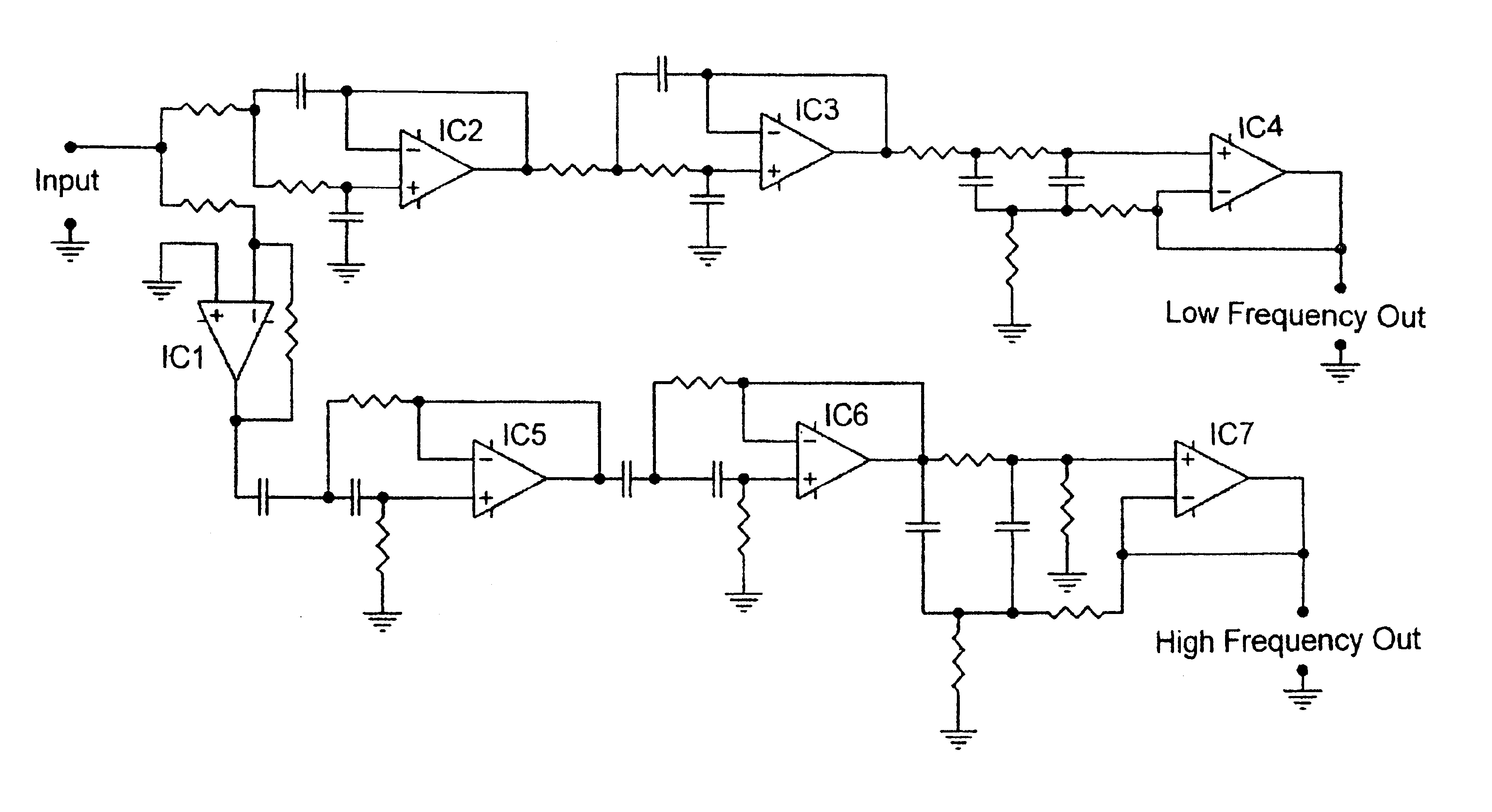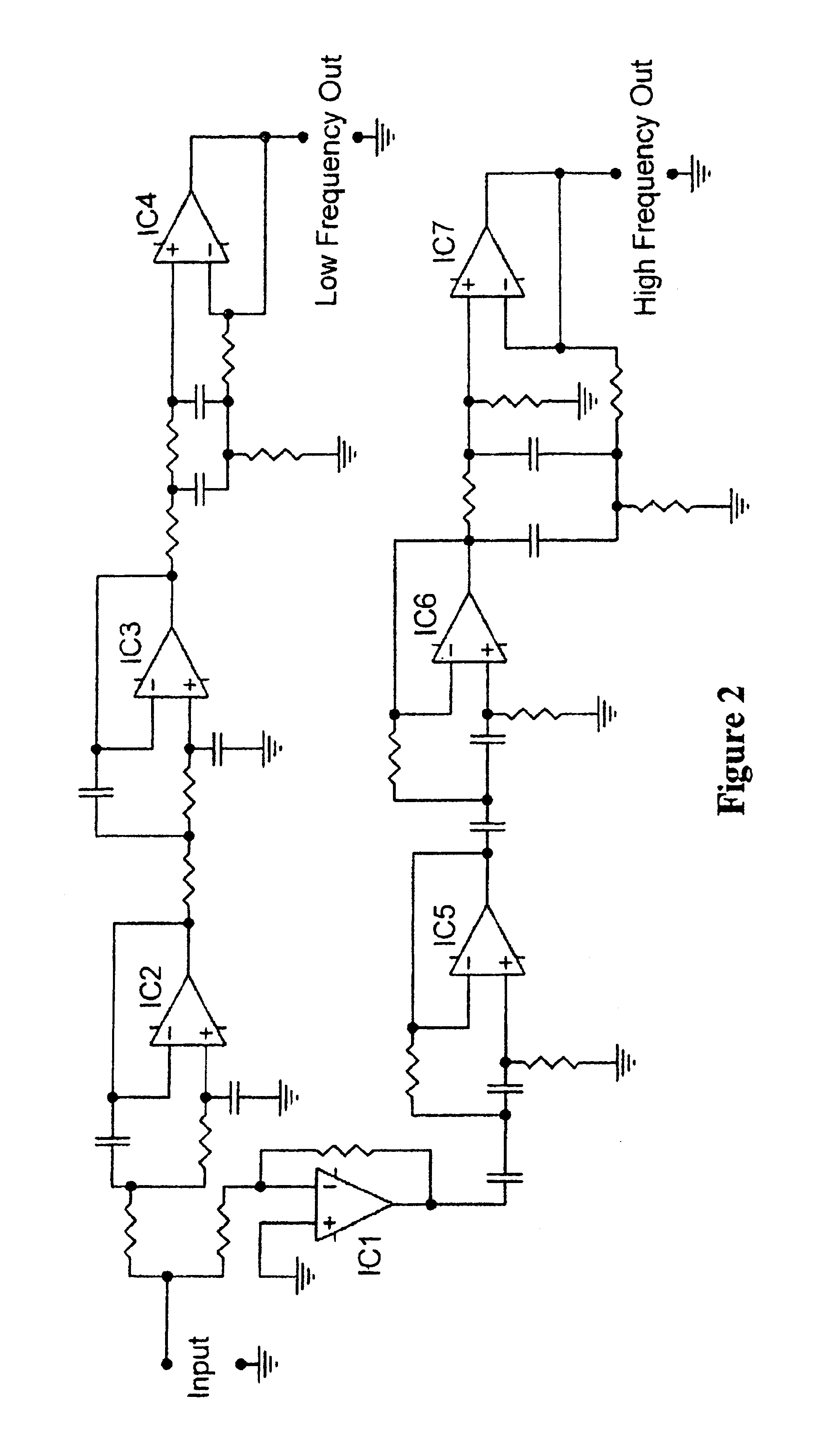Crossover filter system and method
a filter system and cross-over technology, applied in the field of cross-over filters, can solve the problems of increasing group delay, inability to achieve a recombined amplitude response, inability to roll off the response to each electroacoustic transducer quickly enough, etc., to improve the attenuation of out of band signals, improve the amplitude response, and improve the effect of amplitud
- Summary
- Abstract
- Description
- Claims
- Application Information
AI Technical Summary
Benefits of technology
Problems solved by technology
Method used
Image
Examples
Embodiment Construction
The generalised responses of even-order notched crossovers are shown in FIG. 1. FNL is the lower null centre frequency for the high pass filter, FNH is the upper null centre frequency for the low pass filter, FPEAKH is the upper peak frequency for the low pass filter, FINNERL is the highest frequency at which the output of the high pass filter equals the peak value below the null for the high pass filter, FINNERH is the lowest frequency at which the output of the low pass filter equals the peak value above the null for the low pass filter and FX is the crossover or transition frequency. The in-band response of each filter rises at first to a small peak at the frequency of the out-of-band peak of the other filter. It then falls back to reference 0 dB level at the other filter's notch frequency, and onwards to −6.0 dB at the transition frequency fX.
The response falls to a null at its fN, then rises to dBPEAK at fPEAK before falling away again at extreme frequencies at a rate, for an n...
PUM
 Login to View More
Login to View More Abstract
Description
Claims
Application Information
 Login to View More
Login to View More - R&D
- Intellectual Property
- Life Sciences
- Materials
- Tech Scout
- Unparalleled Data Quality
- Higher Quality Content
- 60% Fewer Hallucinations
Browse by: Latest US Patents, China's latest patents, Technical Efficacy Thesaurus, Application Domain, Technology Topic, Popular Technical Reports.
© 2025 PatSnap. All rights reserved.Legal|Privacy policy|Modern Slavery Act Transparency Statement|Sitemap|About US| Contact US: help@patsnap.com



